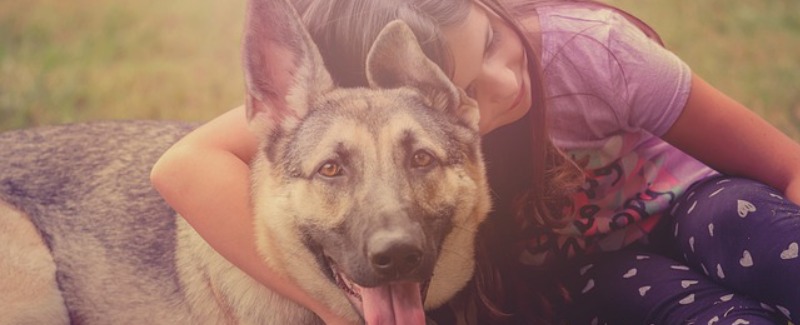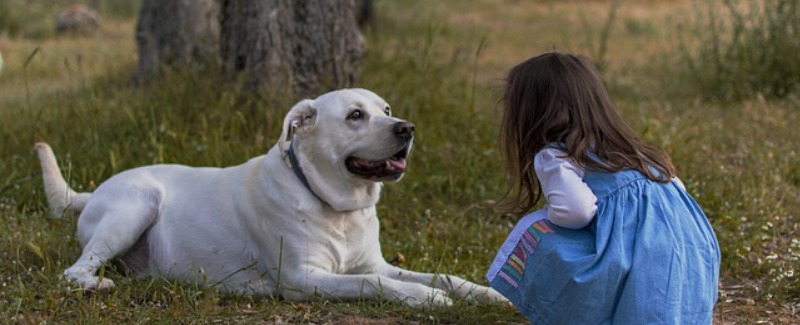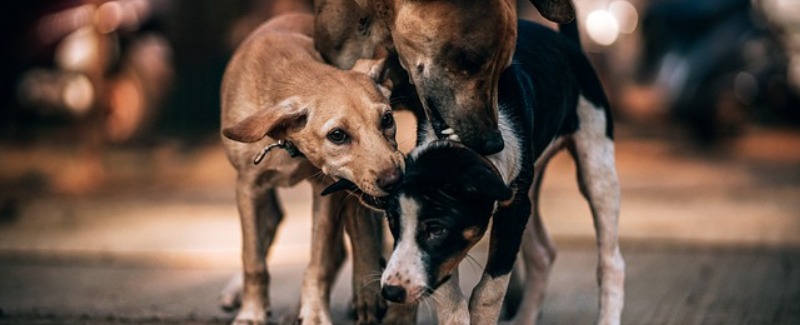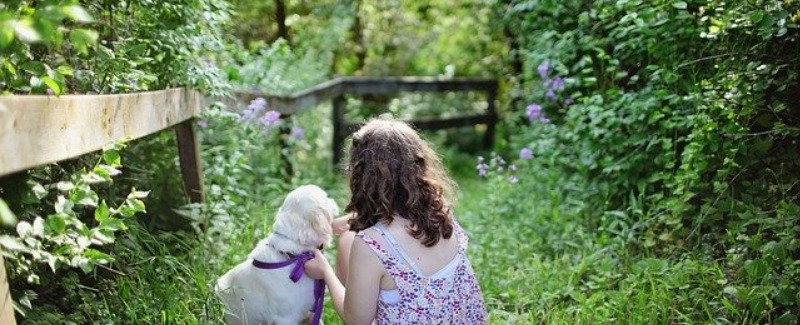Some dogs are extremely tolerant of even rough handling by children, and will happily accept being used as pillows, or being dressed up in baby clothes and wheeled around the neighborhood in a stroller. However, dogs, even those that are considered to be members of their human families, are animals first, and will defend themselves as such if necessary. It is important to teach kids to handle dogs gently and with respect.
Teaching Kids to Control Themselves
Contents
How children conduct themselves around dogs has a big impact on how dogs react and respond to them. Kids must be taught early on that dogs aren’t toys provided for their amusement. Instead, help kids understand that dogs are not just living and breathing, they’re also thinking and feeling creatures that deserve kindness and compassion.
Like young dogs, young people often have very little self-control, and may have to be restricted from interacting closely with dogs until they’re able to behave calmly in the presence of them.
Dos and Don’ts:
- Don’t allow kids to run up to or by your dog.
- Do teach kids to let sleeping dogs lie undisturbed.
- Don’t allow kids to tease your dog through a fence or with food.
- Do teach kids to talk to dogs calmly, not scream or shriek at them.
- Don’t let kids harass your dog if he’s chewing on something.
- Do involve kids in your dog’s socialization and training program, even if they’re not your own children.
- Don’t allow kids to handle your dog roughly.
A little common sense goes a long way. If kids don’t behave appropriately around dogs, or vice versa, then they don’t get to interact until more training has been done.
Respect for the Dog’s Space
Like people, dogs have an invisible circle around them, defining their personal space. The size of the circle depends on the temperament and personality of the individual dog, as does the dog’s likely response when the boundary is crossed. Some dogs are quite accepting of their boundaries being crossed, depending on the circumstances, while others will flee, and still others will defend their space with threats or outright aggression.
Dogs should be provided with their own kid- free zone, whether it’s their bed, a crate, or an unused, out-of-the-way or little-used room in the house. Kids must be taught to leave the dog completely alone when the dog retreats to his safe zone — no poking fingers in the crate, reaching for him, or whining allowed.
Much of what kids want to do to dogs, like hugging them tightly around the neck, is quite naturally perceived by dogs to be acts of dominance or aggression. In fact, unprovoked dog bites inflicted on children are relatively rare, although the provocation that preceded the bite might not be obvious to the casual observer.
Supervision Equals Safety
Supervision of kids and dogs is the single most important step you can take to ensure the safety of both. Along with allowing you to see any inappropriate behavior by either, supervision affords you an opportunity to referee and teach both how to play together productively.
The Under-six Rule
Children under six years old should never be left unsupervised with any dog, even your beloved family pet. Young children are so impulsive, and they can and will do all kinds of things to dogs that even if well intentioned, may cause the dog to feel that he needs to defend himself. Toddlers need particularly close supervision, as their jerky movements, high-pitched screams, and tendency to tightly grasp things (in this case, maybe your dog’s ears, feet, or tail) are unsettling or downright frightening for many dogs.
The relative size and strength of kids compared to your dog is another factor to consider. Even small dogs can quite easily overpower a child that is three or four times their size. Dogs, especially young ones, often treat small children like littermates, thinking nothing of mouthing; bodyblocking; knocking them down; and snatching snacks, toys, or other items out of children’s hands. In addition, the small stature of young children often puts them at face level with dogs, encouraging some dogs to believe that a child staring at them is challenging them for dominance, an invitation for disaster.
Playing Nice
Of course, if you have both kids and dogs, chances are they are going to play together. How they play is important both for safety and because of how it affects the overall relationship between them. Any physical play between dogs and kids should be closely supervised, and children should never play physically competitive games with dogs, like tug of war or wrestling. Any time the dog wins a competitive game with a child, it encourages the dog to believe that he is above the kid on the relationship totem pole.
About 70 percent of serious dog bites are inflicted on children, usually younger than 10 years old. Most of the bites are to the face, and are inflicted by a family dog or another dog well known to the child. Lack of supervision and clear direction for both kids and dogs is at the root of most bites. from Reasons to Teach Your Child Dog Safety
Instead of competitive games, teach kids and dogs to play cooperative games, like fetch or find it. Both kids and dogs usually love playing find me, in which a parent or someone else who can physically control the dog restrains him (or, if his level of training allows, leave him on a wait) while the child hides, then calls the dog to find her, rewarding the dog with lots of praise and treats when he gets there.





